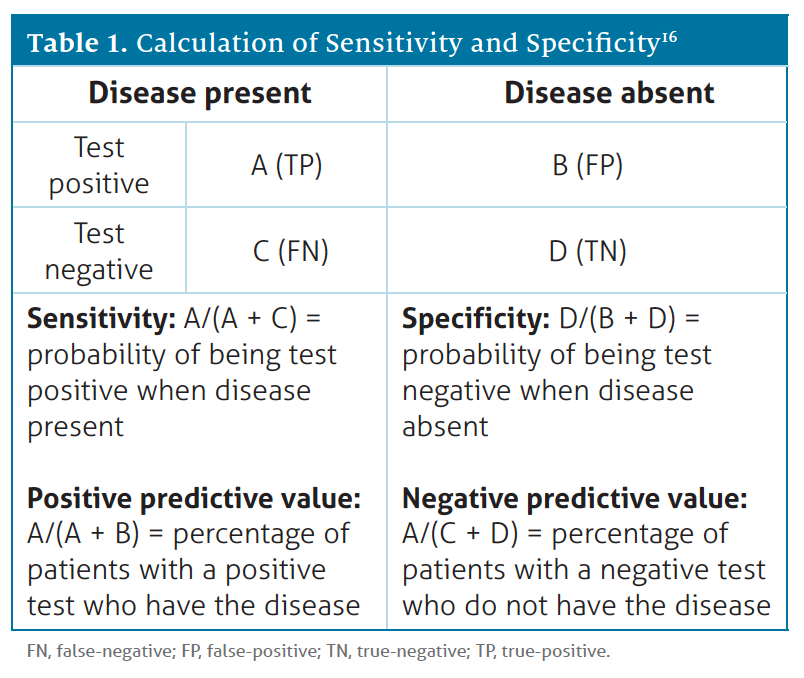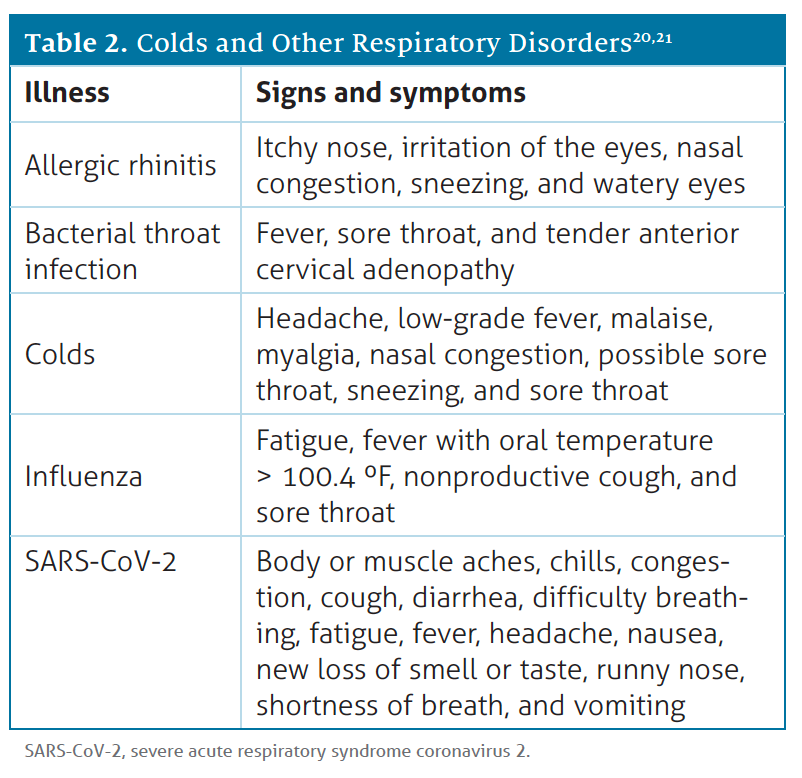Publication
Article
Pharmacy Times
Point-of-Care Testing Offers New Opportunities
Author(s):
Consider these steps for pharmacists to further evolve their role as the pandemic continues to put pressure on the health care system.
In addition to dispensing and medication management, pharmacists are poised during the coronavirus disease 2019 (COVID-19) pandemic to provide preventive health services, including self-care recommendations and vaccinations.1 Many pharmacists may also use “waived” testing as designated by the FDA’s Clinical Laboratory Improvement Amendments (CLIA) to detect and aid in their decisions of disease management.1,2
Pharmacists have an excellent opportunity to further evolve their role via point-of-care testing (POCT), especially considering the pressure that COVID-19 has placed on the health care system.1,3 Proper training, certification, and advances in testing technology enable POCT to occur in any setting.3,4
The following outlines steps for pharmacists to get started as well as the opportunities that lie ahead. We also discuss the impact that pharmacists can make and the aid they can offer in triaging, assessing, and treating patients with minor ailments, as the United States continues to tread through this pandemic.
POCT Opportunities for Pharmacists
In the United States, 490,600 individuals were hospitalized and approximately 34,200 died from influenza during the 2018 to 2019 season.5 During the 2020 to 2021 influenza season, coinfection with severe acute respiratory syndrome coronavirus 2 (SARS-CoV-2), which causes COVID-19, is a significant possibility. Both viruses cause respiratory symptoms, ranging from asymptomatic to severe, and they may be difficult to initially distinguish based on symptoms alone.5 The course of illness for influenza and SARS-CoV-2 is also similar during the first 5 days, with cough and fever being the most common symptoms.
Therefore, early detection is important to guide subsequent treatment decisions.6,7 Community pharmacies can administer rapid POCT for COVID-19 and influenza to help reduce emergency department (ED) visits.8-10 With early recognition, outbreak precautions/ preventative measures as well as supportive care can be put in place for COVID-19.5 Likewise, for influenza, antiviral therapy is most likely to provide benefit when initiated within the first 48 hours of illness.7
Pharmacists using collaborative practice agreements based upon CLIA-POCT results have shown to provide efficacious and safe disease management of acute bacterial and viral conditions, such as furnishing oseltamivir for influenza.9 With a negative test, pharmacists can provide OTC recommendations for symptom relief. In addition, pharmacists have shown lower rates of inappropriate antimicrobial use under these influenza management programs.9-11
Additional opportunities for POCT include cholesterol panels, hepatitis C, glycated hemoglobin, HIV, international normalized ratio, and group A Streptococcus pyogenes.
To get started, the pharmacy must enroll as a CLIA-waived testing site through the Centers for Medicare & Medicaid Services (CMS). The CMS-11612 form is an application that is mailed to the pharmacy’s state agency.13 Furthermore, CMS outlines a complete guide on how to obtain a CLIA certificate of waiver14 and register as a laboratory. The National Association of Chain Drug Stores offers a certificate training program for pharmacists on POCT. The training includes disease-state education, (eg, group A Streptococcus pyogenes, hepatitis C, and HIV), health assessments, information and practice models regarding collaborative practice agreements, physical assessments, and POCT procedures.2,3,15
Although POCT provides results in a short time frame, the results may be limited in terms of their sensitivity and specificity and may be subject to false-negative or false-positive results. Therefore, it is vital that the pharmacist properly interpret these results. Understanding the differences in negative predictive value, positive predictive value, sensitivity, and specificity (Table 1) allows pharmacists to better educate patients about their results.16 To minimize false results, it is advisable to collect specimens as early into the illness onset as possible, follow manufacturers’ instructions, and follow up negative results with confirmatory tests if a laboratory influenza diagnosis is needed.17

To provide POCT safely, pharmacists must minimize the risk of exposure to SARS-CoV-2 by implementing safety standards to reduce the risk of transmission. In addition to adhering to personal protective equipment recommendations, engineering controls, and cleaning protocols as outlined by the CDC,18 pharmacists should also use proper infection control practices when collecting and handling specimens, including the following18:
- Change gloves and sanitize hands between every specimen collection and after adding specimens to the testing device.
- Decontaminate any instruments used to perform testing according to the manufacturer’s recommendations.
- Handle laboratory waste as biohazardous waste.
- Collect the specimen, and then maintain at least 6 feet of separation from the person from whom the specimen was collected. Or maintain 6 feet of separation while supervising onsite self-collection.
- Use preprinted labels to identify the name of the patient, the assigned identification number, date of birth, date of specimen, and specimen type.
Patient Care Services
The pharmacy continues to be an ideal place for health care advice, and pharmacists will continue to be sought out for recommendations of OTC treatments. Community pharmacists are equipped with the knowledge and training to assess these common self-limiting or uncomplicated conditions.19 Such minor ailments may include allergies, colds, coughs, and pain. Many colds and respiratory disorders present with similar signs and symptoms that may be differentiated by specific defining characteristics as outlined in Table 2.20,21 In addition, many of these colds and respiratory disorders have common signs and symptoms with COVID-19. In triaging, assessing, and providing health advice and education, pharmacists will help relieve pressure on the health care system during the pandemic,1,8 and the pharmacy will further become a destination where patients can seek medical attention without putting pressure on ED and urgent-care centers.

Pharmacists should contribute to improving public health through patient care services, including disease self-care and support, medication monitoring, patient education, POCT, and vaccinations. The role of the pharmacist is evolving in patient care, and using CLIA-waived tests in the community pharmacy setting is an opportunity to advance the profession and aid in disease management during COVID-19. Under a collaborative practice agreement, pharmacists can provide a rapid response by offering prescription treatments, such as antivirals like oseltamivir for influenza, or referring patients to their primary care physicians or elsewhere for further care. Finally, consumers continue to suffer from self-limiting ailments, and the community pharmacy is equipped to provide them with care and education. Ultimately, the role of the pharmacist in patient care has broadened during the pandemic, and the community pharmacy has become a destination for patients with a variety of ailments.
George Zikry, PharmD, is a Community Pharmacy Enhanced Services Network (CPESN) executive pharmacy resident; Albert Bach, PharmD, APh, is an assistant professor of pharmacy practice; Kimberly Won,PharmD, APh, BCCCP, is an assistant professor of pharmacy practice; and Karl Hess, PharmD, APh, CTH, FCPhA, FAPhA, AFTM RCPS (GLASG), is an associate professor of pharmacy practice, the director ofCommunity Pharmacy Practice Innovations, and the CPESN executive pharmacy residency program director, all at Chapman University’s School of Pharmacy in Irvine, California.Sheila Seed, PharmD, MPH, CTH, AFTM RCPS (GLASG), is a professor and chair of pharmacy practice at Massachusetts College of Pharmacy and Health Services in Worcester.
REFERENCES
- Strand MA, Bratberg J, Eukel H, Hardy M, Williams C. Community pharmacists’ contributions to disease management during the COVID- 19 pandemic. Preven Chronic Dis. 2020;17:E69. doi:10.5888/pcd17.200317
- Community pharmacy-based point-of-care testing certificate program. National Association of Chain Drug Stores. Accessed October 27, 2020. http://nacds.learnercommunity.com/Point-of-Care-Testing- Certificate
- Kehrer JP, James DE. The role of pharmacists and pharmacy education in point-of-care testing. Am J Pharm Ed. 2016;80(8):129. doi:10.5688/ ajpe808129
- New study shows point-of-care testing increases patient access to care. National Association of Chain Drug Stores. April 13, 2018. Accessed October 27, 2020. https://www.nacds.org/news/new-study-shows-pointof-care-testing-increases-patient-access-to-care/
- Pormohammad A, Ghorbani S, Khatami A, et al. Comparison of influenza type A and B with COVID-19: a global systematic review and meta-analysis on clinical, laboratory and radiographic findings. Rev Med Virol. 2020:e2179. doi:10.1002/rmv.2179
- Zayet S, Kadiane-Oussou NJ, Lepiller Q, et al. Clinical features of COVID-19 and influenza: a comparative study on Nord Franche-Comte cluster. Microbes Infect. 2020;22(9):481-488. doi:10.1016/j. micinf.2020.05.016
- Uyeki TM, Bernstein HH, Bradley JS, et al. Clinical practice guidelines by the Infectious Diseases Society of America: 2018 update on diagnosis, treatment, chemoprophylaxis, and institutional outbreak management of seasonal influenzaa. Clin Infect Dis. 2019;68(6):e1-e47. doi:10.1093/cid/ ciy866
- Hedima EW, Adeyemi MS, Ikunaiye NY. Community pharmacists: on the frontline of health service against COVID-19 in LMICs. Res Soc Adm Pharm. 2020:S1551-7411(20)30385-5. doi:10.1016/j.sapharm.2020.04.013
- Klepser DG, Klepser ME. Point-of-care testing in the pharmacy: how is the field evolving? Expert Rev Mol Diagn. 2018;18(1):5-6. doi:10.1080/14 737159.2018.1392240
- Klepser DG, Klepser ME, Murry JS, Borden H, Olsen KM. Evaluation of a community pharmacy—based influenza and group A streptococcal pharyngitis disease management program using polymerase chain reaction point-of-care testing. J Am Pharm Assoc (2003). 2019;59(6):872-879. doi:10.1016/j.japh.2019.07.011
- Gubbins PO, Klepser ME, Adams AJ, Jacobs DM, Percival KM, Tallman GB. Potential for pharmacy-public health collaborations using pharmacy-based point-of-care testing services for infectious diseases. J Public Health Manag Pract. 2017;23(6):593-600. doi:10.1097/ PHH.0000000000000482
- Clinical Laboratory Improvement Amendments (CLIA) application for certification. Centers for Medicare & Medicaid Services. Accessed November 13, 2020. https://www.cms.gov/Medicare/CMS-Forms/CMSForms/ Downloads/CMS116.pdf
- Clinical Laboratory Improvement Amendments (CLIA) state survey agency contacts. Centers for Medicare & Medicaid Services. Accessed November 13, 2020. https://www.cms.gov/Regulations-and-Guidance/ Legislation/CLIA/Downloads/CLIASA.pdf
- How to obtain a CLIA certificate of waiver. Centers for Medicare & Medicaid Services. Accessed November 13, 2020. https://www.cms.gov/ regulations-and-guidance/legislation/clia/downloads/howobtaincertificateofwaiver. pdf
- Boylan L. NACDS launches point-of-care testing program. National Association of Chain Drug Stores. April 20, 2015. Accessed October 27, 2020. https://www.nacds.org/news/nacds-launches-point-of-care-testing- program/
- Parikh R, Mathai A, Parikh S, Sekhar GC, Thomas R. Understanding and using sensitivity, specificity and predictive values. Indian J Ophthalmol. 2008;56(1):45-50. doi:10.4103/0301-4738.37595
- Rapid influenza diagnostic tests. CDC. Updated October 25, 2016. Accessed November 13, 2020. https://www.cdc.gov/flu/professionals/ diagnosis/clinician_guidance_ridt.htm
- Guidance for SARS-COV-2 point-of-care testing. CDC. Updated November 13, 2020. Accessed November 18, 2020. https://www.cdc.gov/ coronavirus/2019-ncov/lab/point-of-care-testing.html
- Cadogan CA, Hughes CM. On the frontline against COVID-19: community pharmacists’ contribution during a public health crisis. Res Soc Adm Pharm. 2020:S1551-7411(20)30292-8. doi:10.1016/j.sapharm.2020.03.015
- Symptoms of coronavirus. CDC Updated May 13, 2020. Accessed November 13, 2020. https://www.cdc.gov/coronavirus/2019-ncov/symptoms- testing/symptoms.html
- Scolaro KL. Colds and allergy. In: Krinsky DL, Ferreri, SP, Hemstreet B, Hume AL, Newton GD, Rollins CJ, Tietze KJ, eds. Handbook of Nonprescription Drugs. American Pharmacists Association; 2017.







